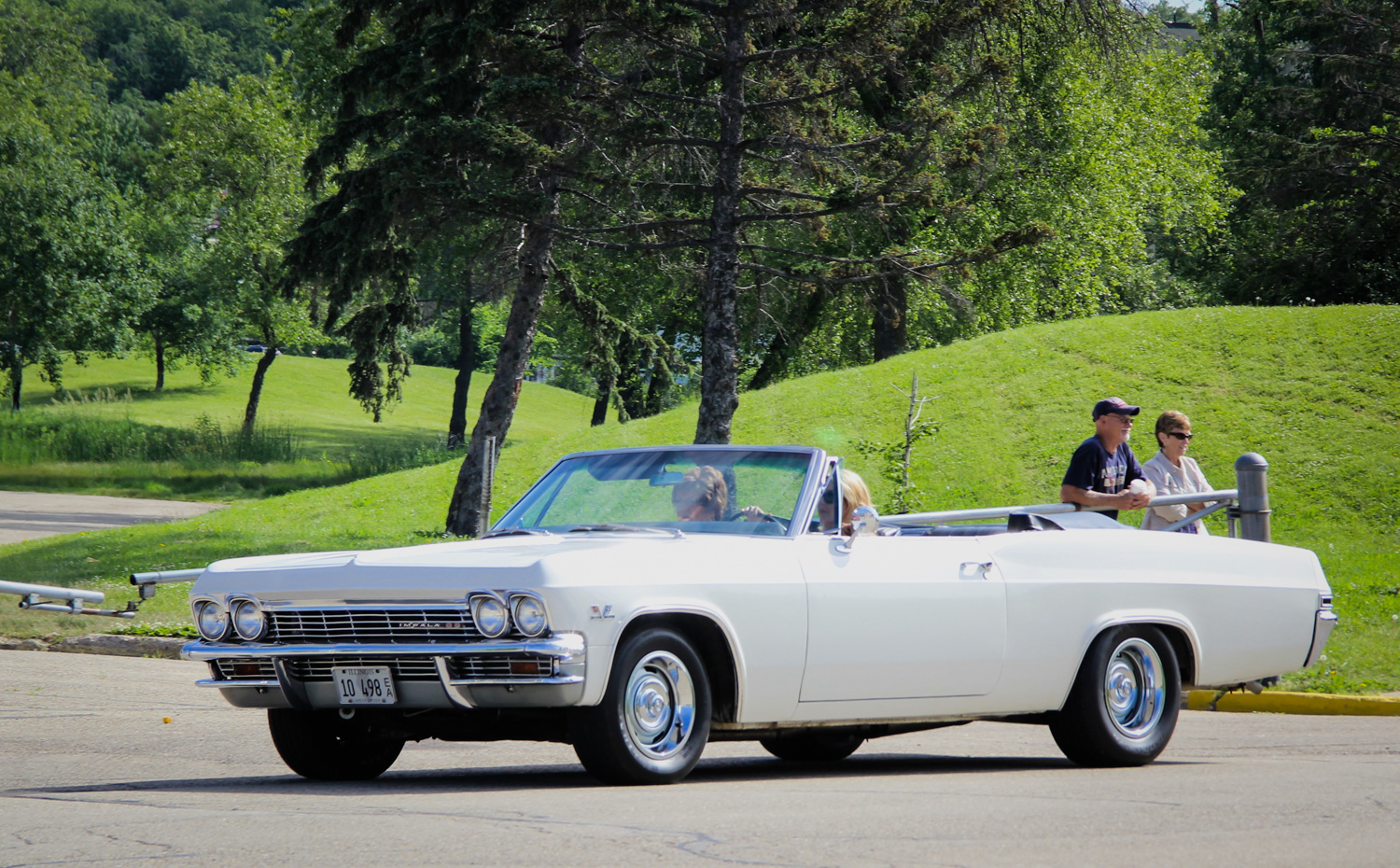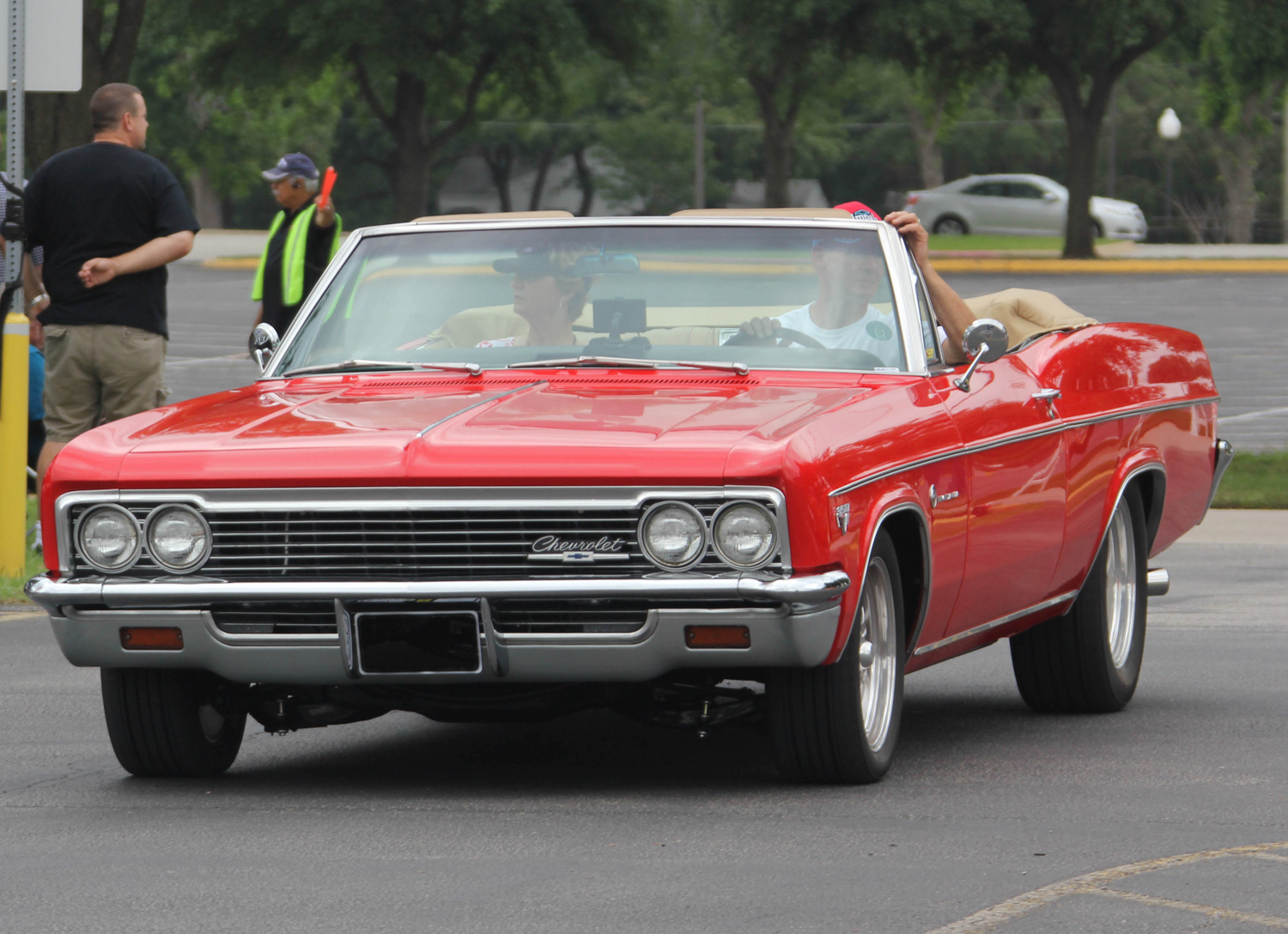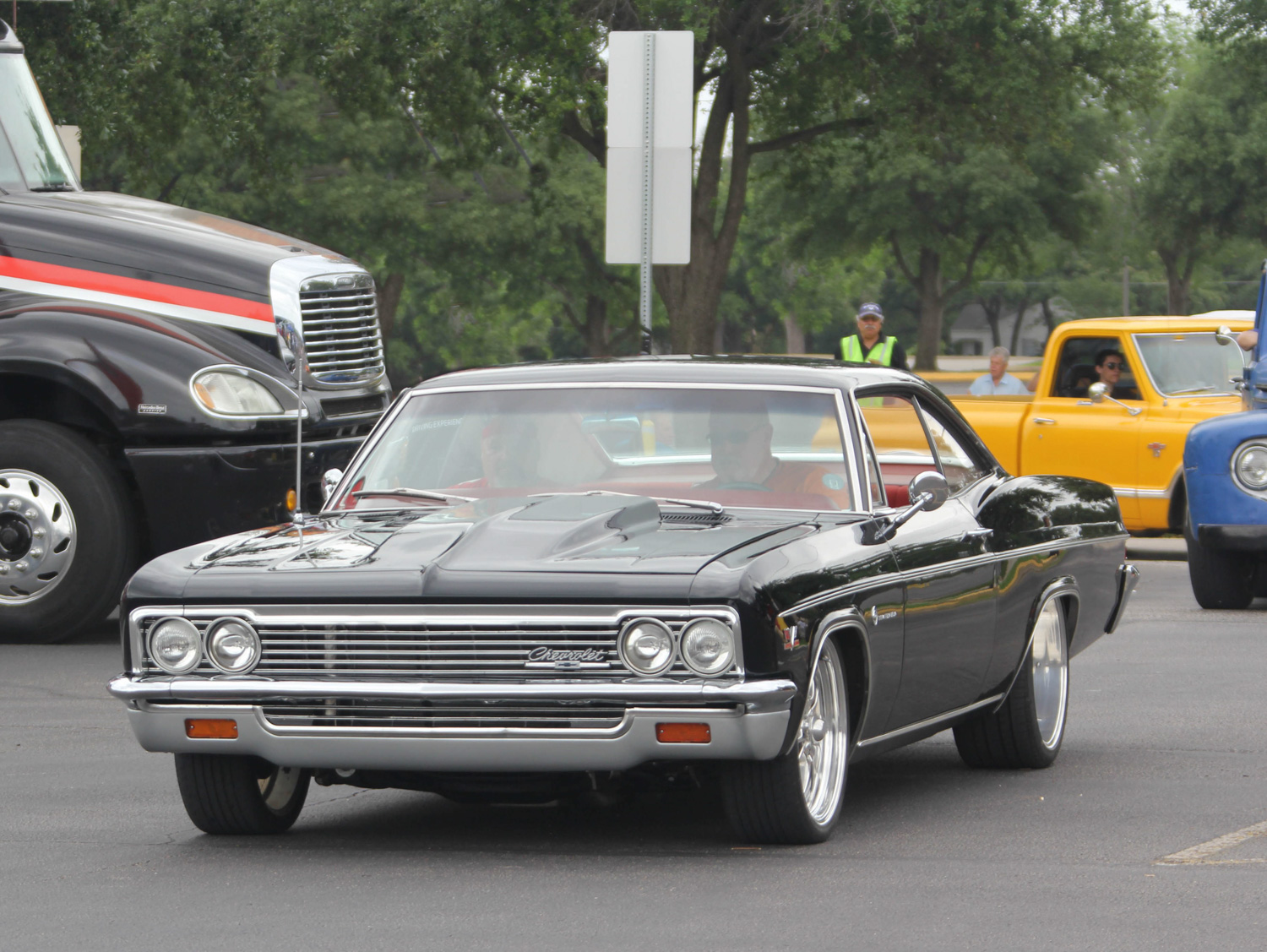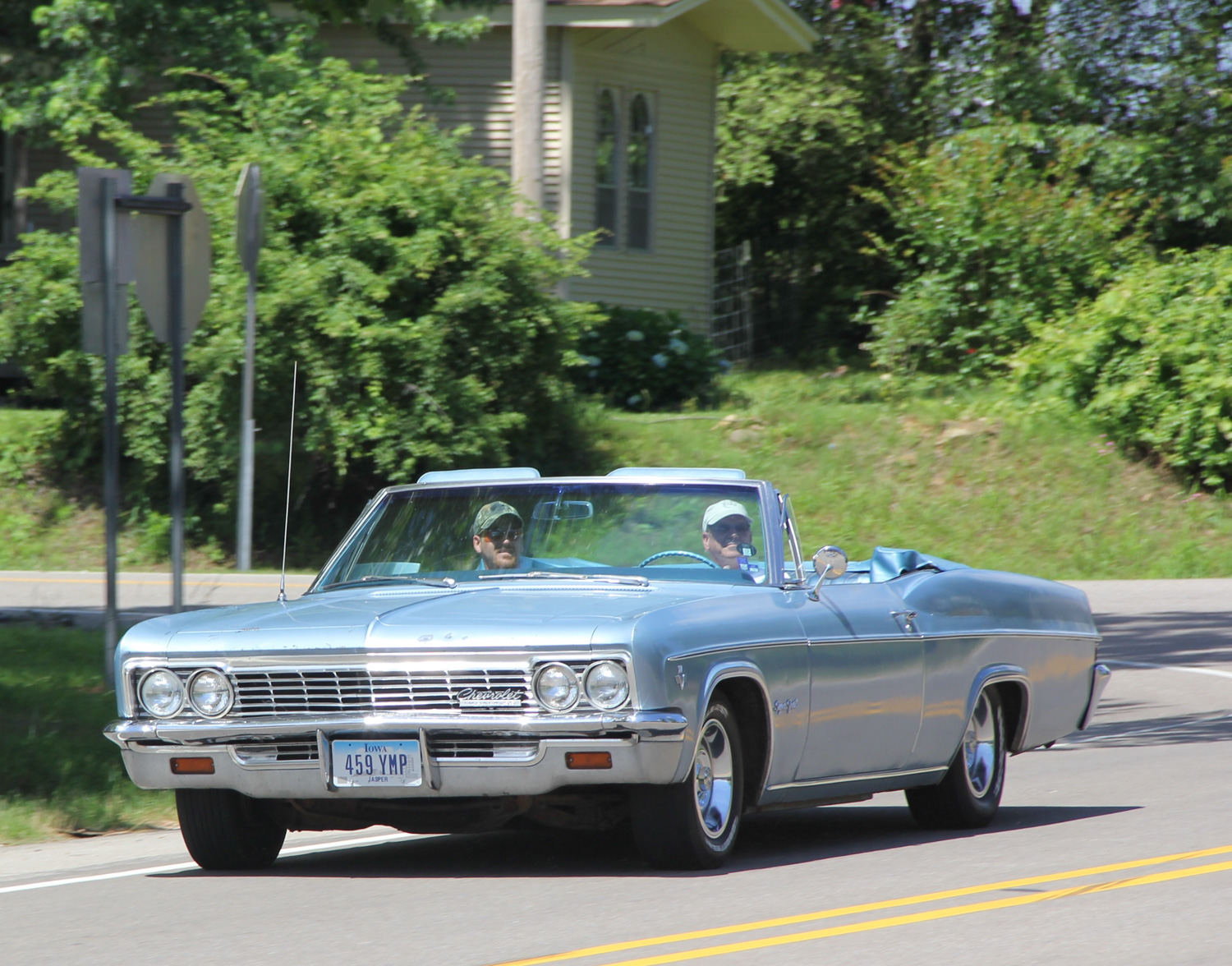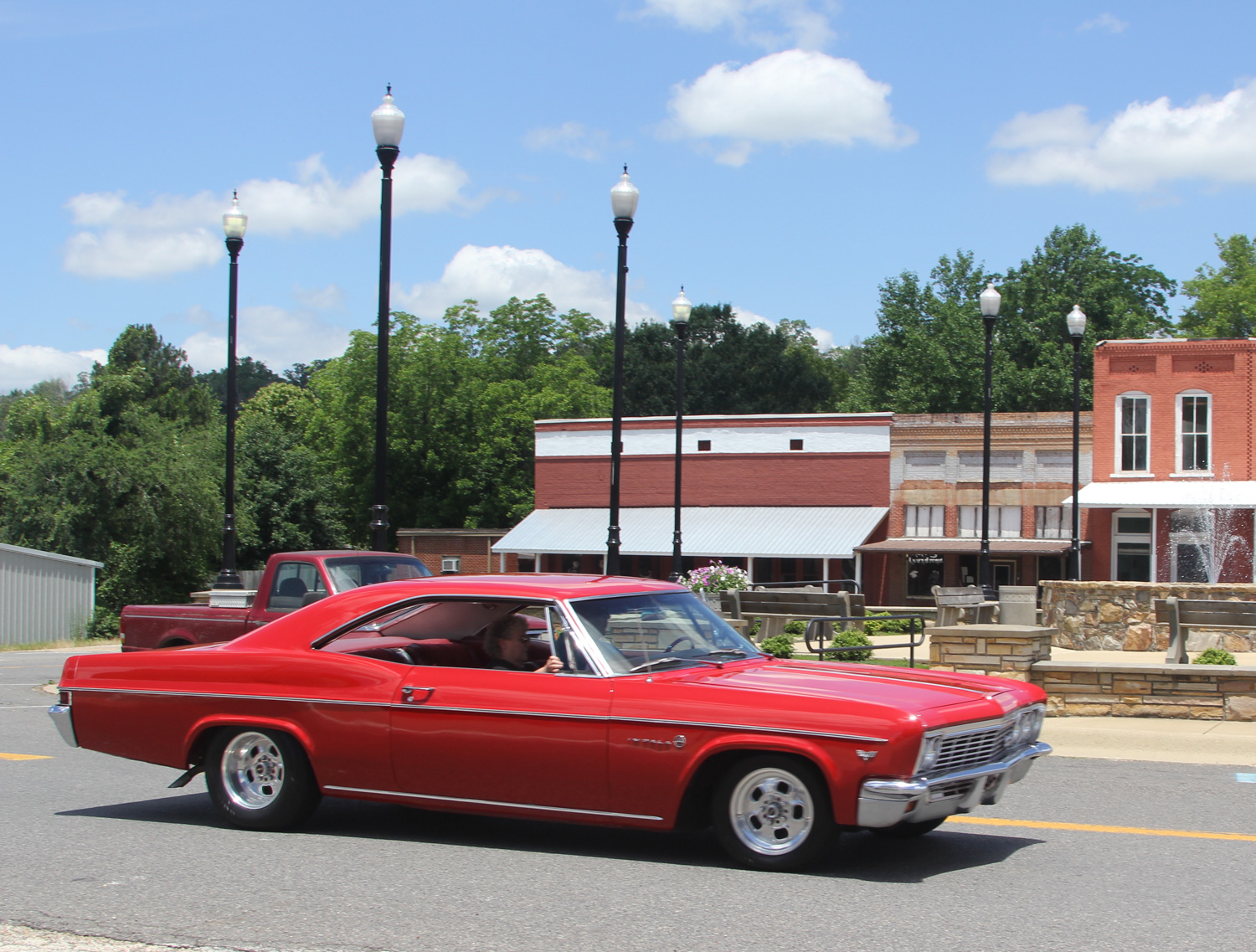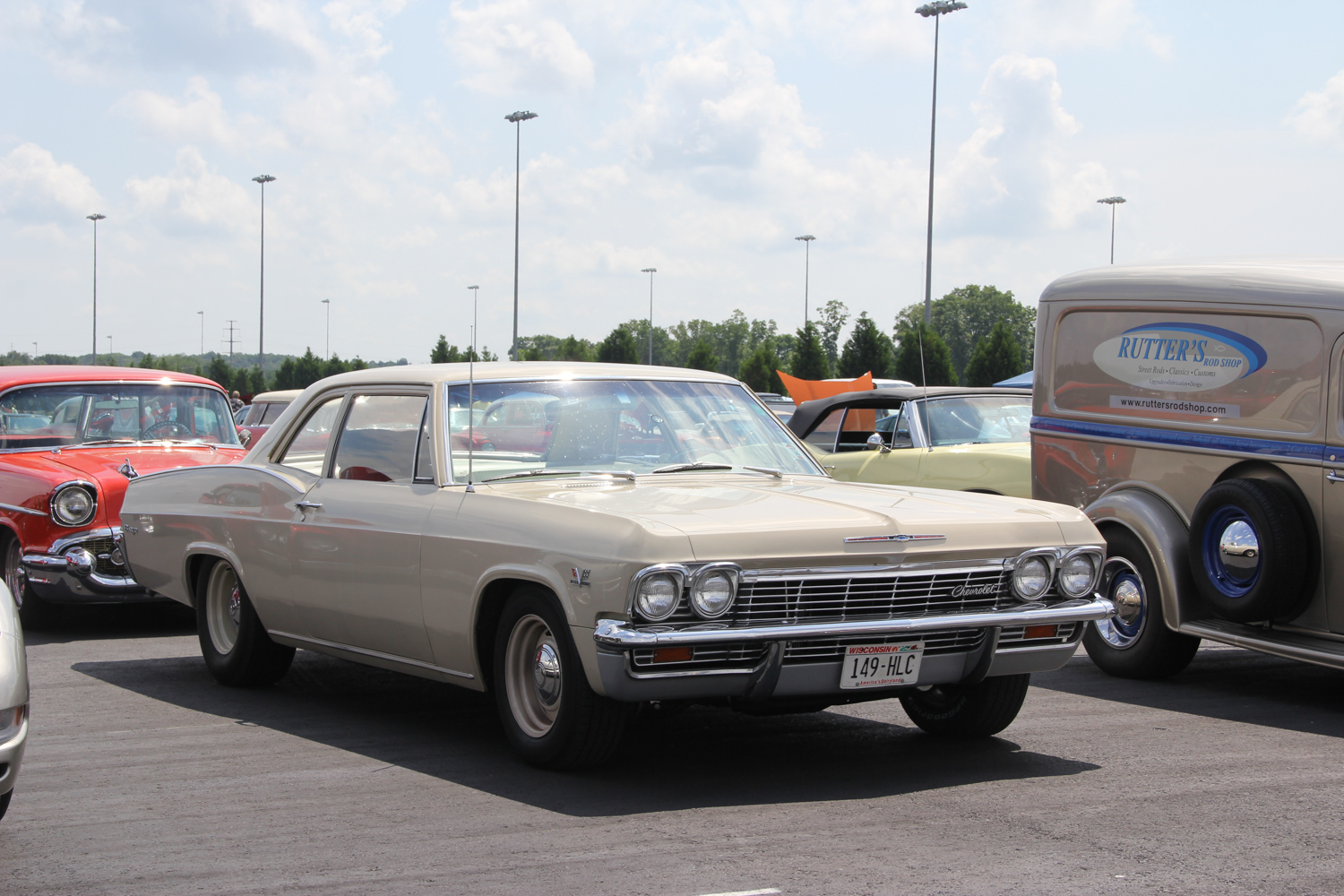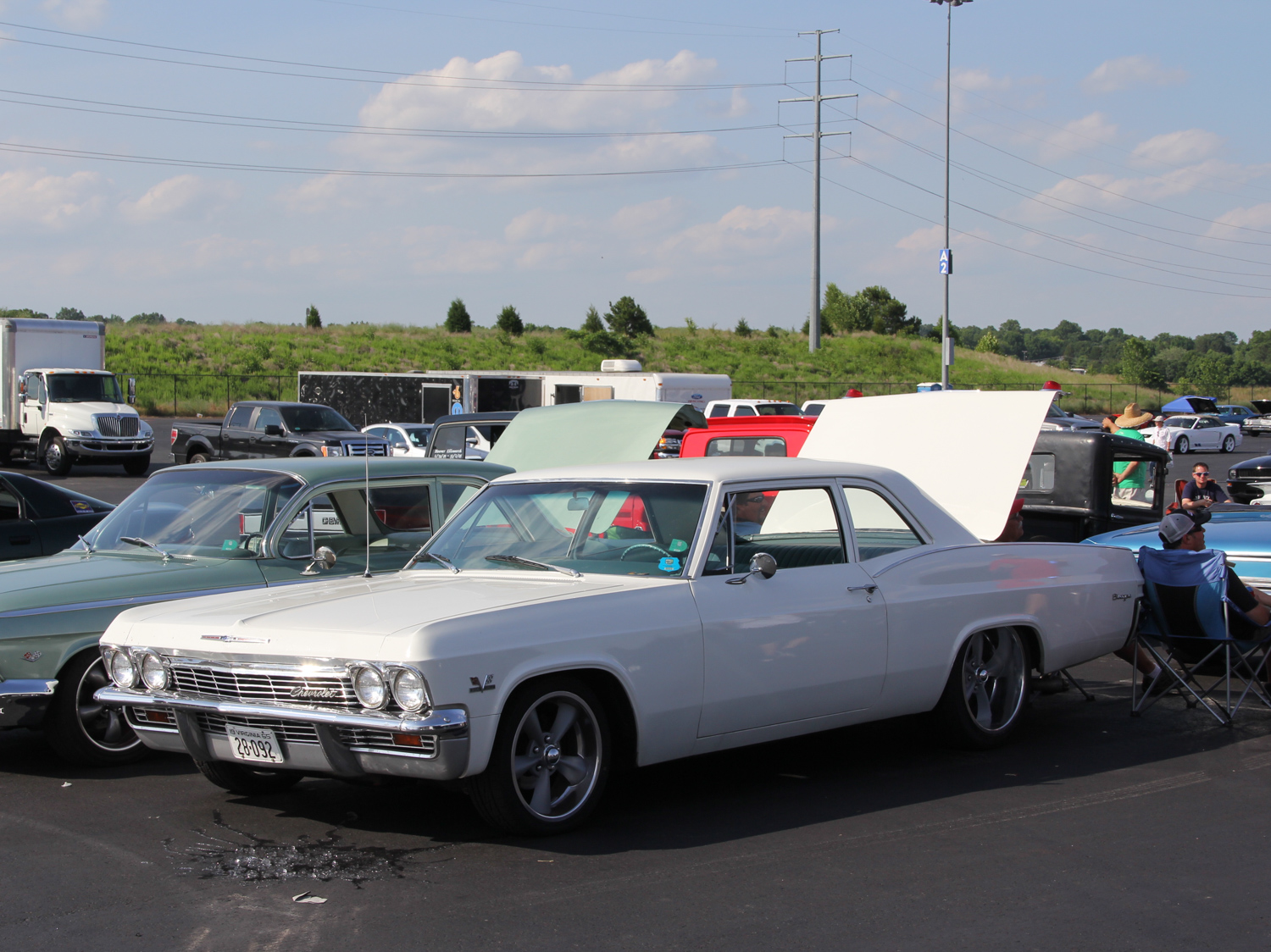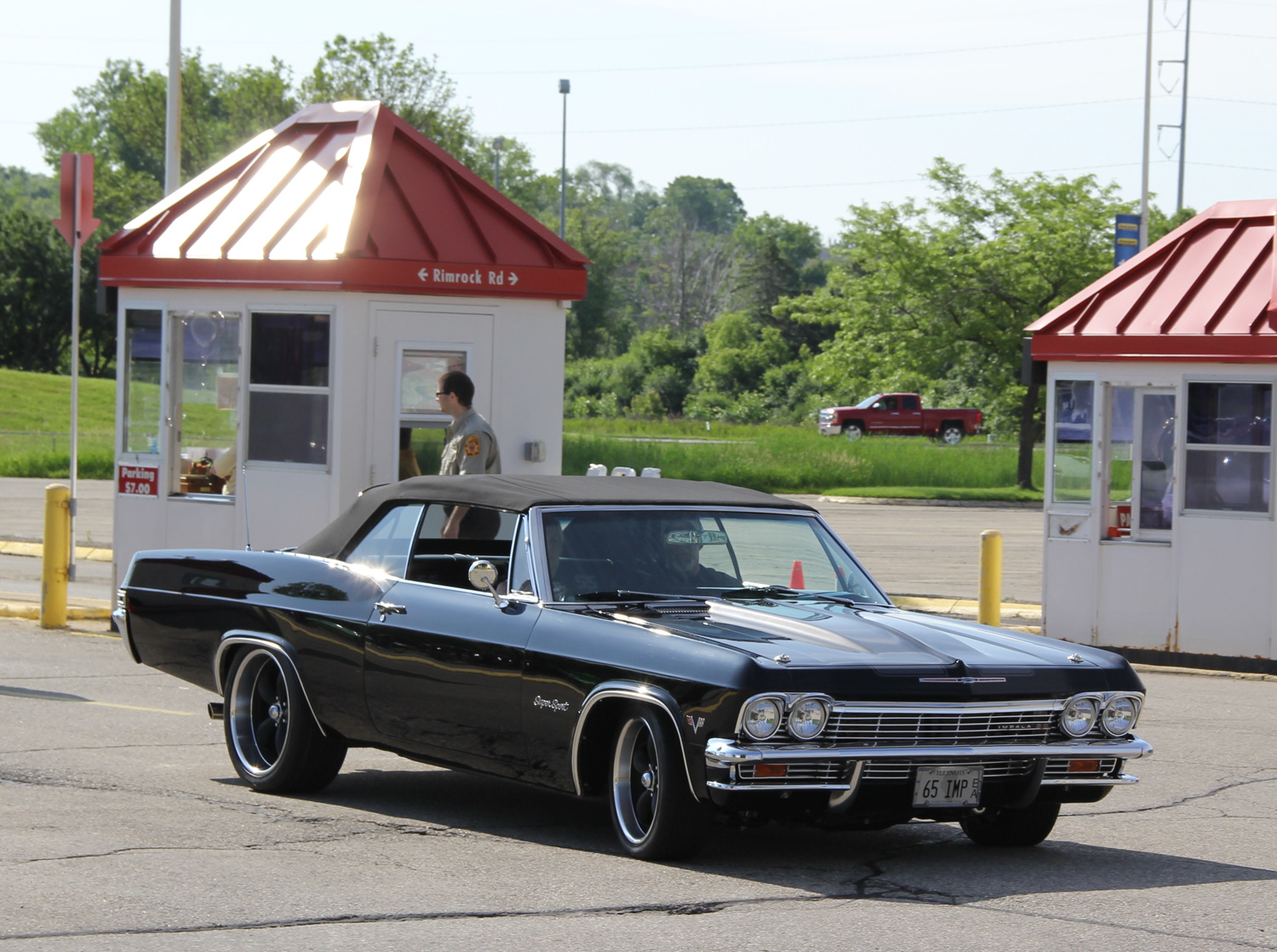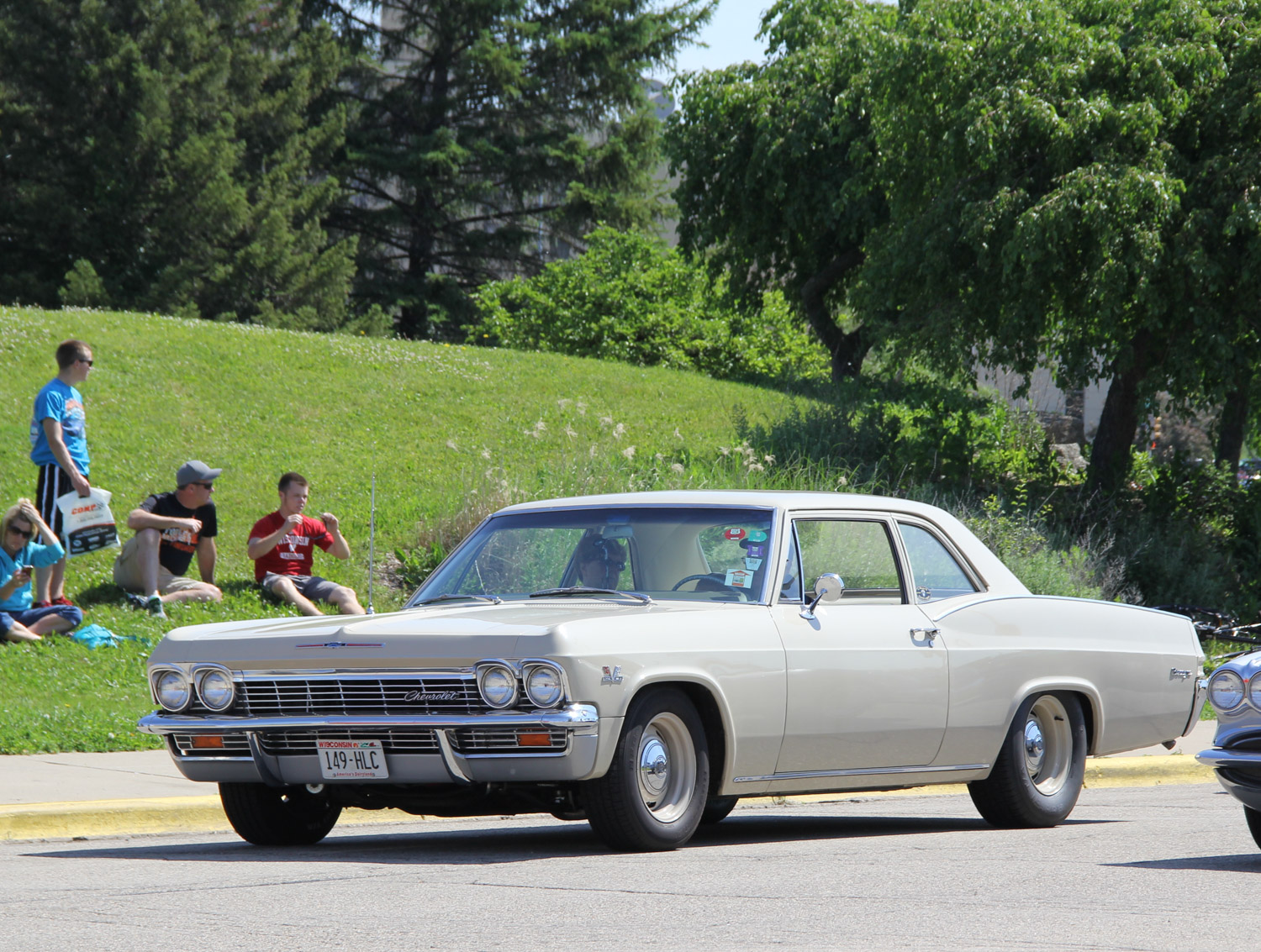Overshadowed by a certain pony car, Chevrolet’s 1965–66 B-bodies shined
It’s difficult to explain today the impact the 1965 B-body Chevys had on the American public, being overshadowed by the unexpected success of the then-new Mustang. Make no mistake, the two biggest sellers in 1965 were the full-size Chevy and, a distant second, the Mustang. In fact, the Impala version of the full-size Chevy sold more than one million copies itself.
A new body, frame, and new Caprice option were plenty of reasons the B-body sold well. The semi-fastback styling was quite a departure from previous big Chevys, as well as a departure from the competition. Upright three-box design was the norm before and after 1965, but not the Impala. Interestingly, the top design was a last minute change after a more formal roof had been approved.
Another styling holdup was the unique front end. Design wanted the leading edge of the beltline to cut back sharply as it dove down beside the headlights and grille, but engineering couldn’t get the sheet metal to do what the stylists wanted, which held up production. Adding difficulty was the trapped hood shut line. Typically hoods carried forward to create the top of the grille. For the 1965 Chevy, there was a panel between the grille opening and the beginning of the hood, containing the hood within sheet metal. Ultimately this became the ’66 front end.
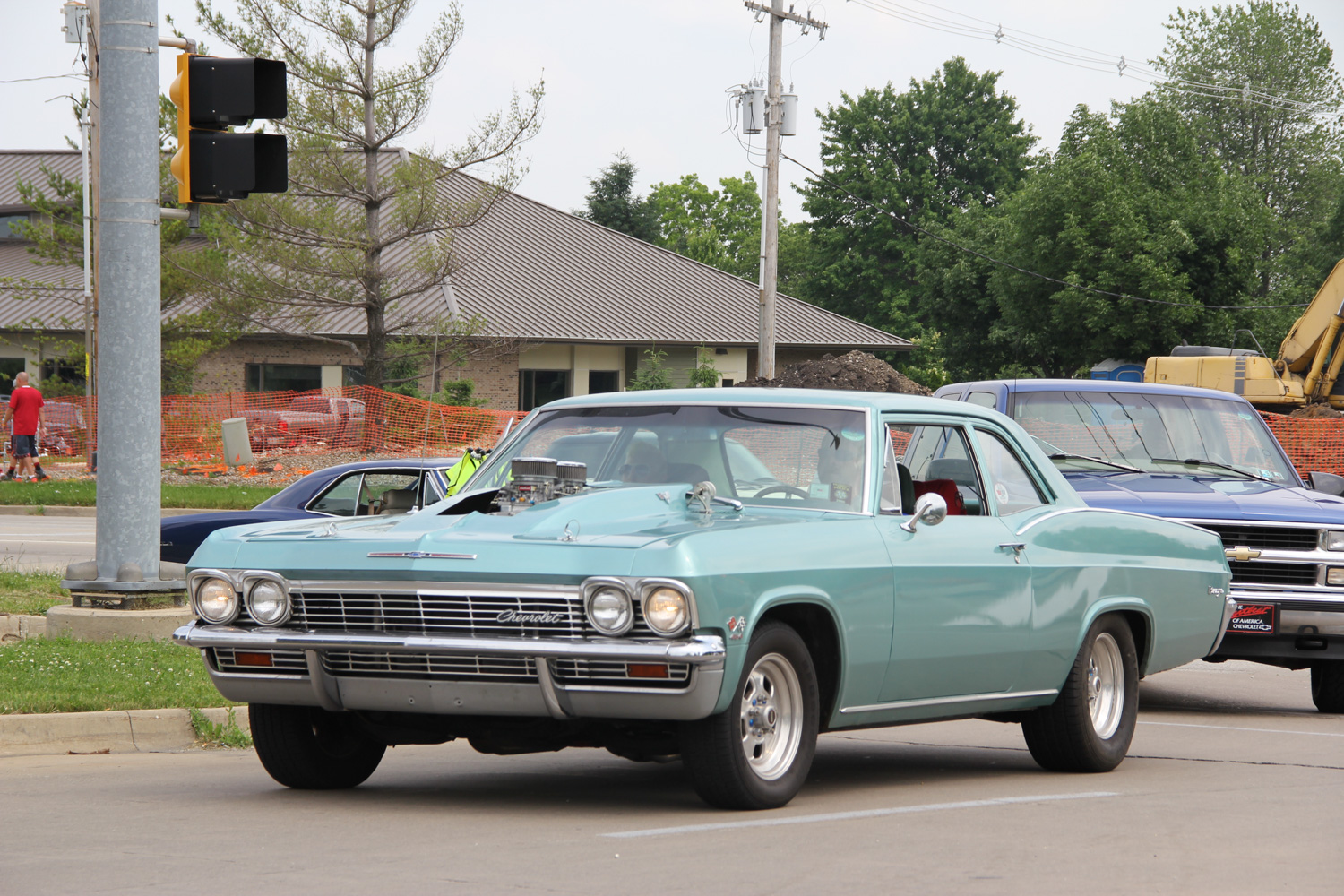

Chevy planned to appeal to the broadest customer desires so it offered a wide variety of options. Everything from a straight-six to the new 396-cubic-inch big-block, available in February 1965, could be ordered. At the high end of the performance spectrum were an L35 396 at 325 horsepower, backed by the 400 Turbo automatic, and the L78 396-cu-in high-performance option with mechanical lifters, aluminum intake, large Holley four-barrel, and hotter cam.
Along with the new perimeter frame was the wider track short arm/long arm front suspension, with improved cornering control and stability. Saginaw power steering was now integrated, rather than the previous year’s use of a hydraulic booster.
Out back, the suspension was new with a Salisbury axle held by two trailing arms supported by coil springs, with one control arm for sixes and 283-cu-in V-8s, and two for the 327-cu-in and larger engines.
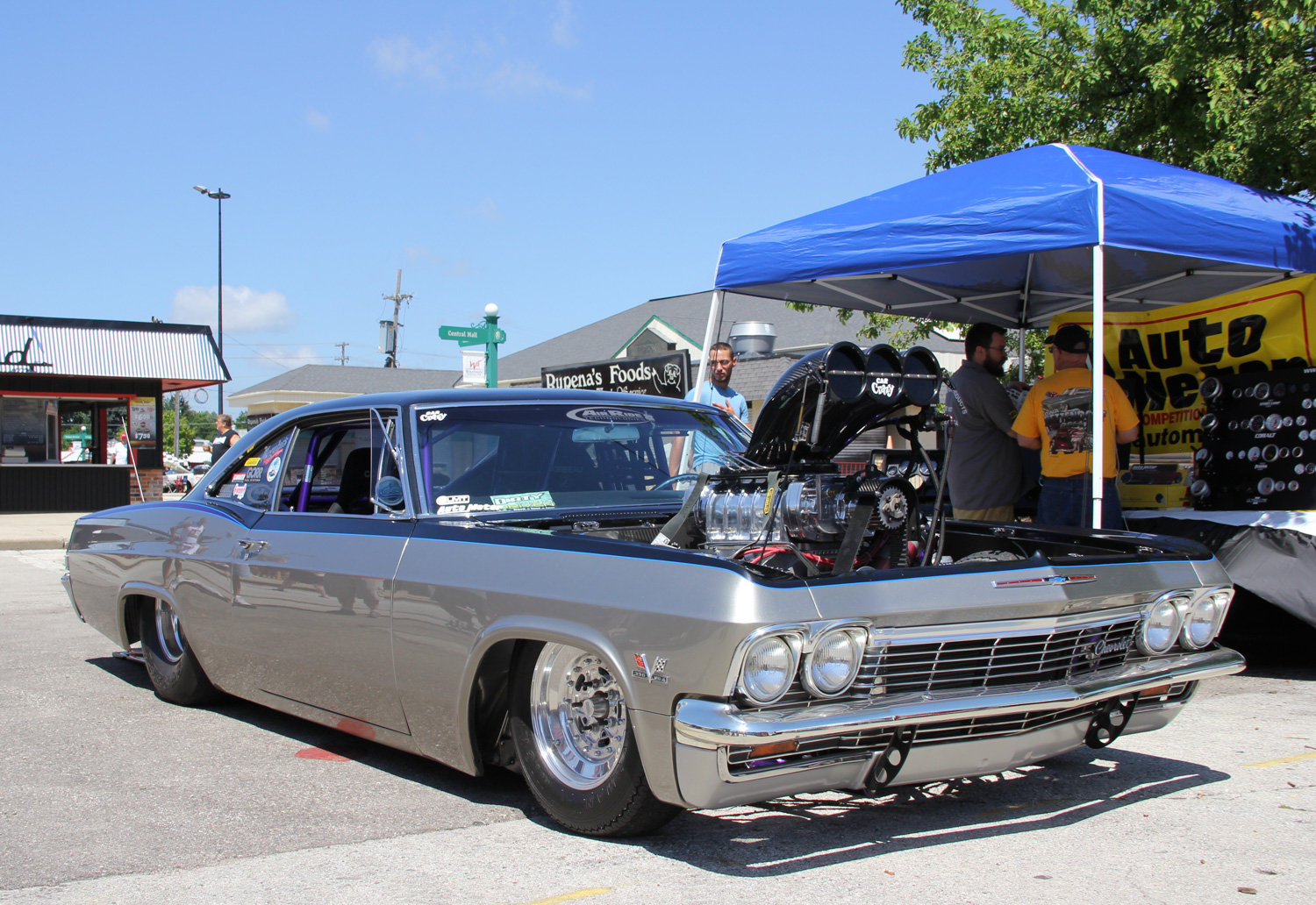
The L78 7.0-liter 427-cu-in big-block, rated at 425 hp, was introduced in 1966. A lumpy cam, mechanical lifters, aluminum intake, Holley four-barrel, and more were the main L78 changes. Three automatic transmissions and a four-speed Muncie manual gave a wide range of transmission options.
Though we mostly remember the Caprice as a special formal roof variant of the 1966 hardtop, a Caprice Custom sedan option was created first for four-door sedans in 1965 as an answer to Ford’s highly successful LTD option. For your $200 Caprice option you received a heavier frame, some suspension tweaks, and other minor paint and trim changes from the standard sedan. Interiors featured a high-grade cloth and vinyl, better carpeting, faux wood trim, and various other unique features. The 283-cu-in, 195-hp small-block was standard.
In ’66, the Caprice became a separate, unique two-door hardtop with a more squared-off roof, which was approaching Cadillac territory with available options and upgrades from the standard Impala. Besides the top, unique trim, and interior details, the 427-cu-in, 425-hp big-block became available. Also new was “Comfortron” air conditioning, allowing for a single temperature that could be set for year-round comfort, and new six-way tilt/telescopic steering. Vinyl roof options, positraction, and four-way power buckets were still more options.

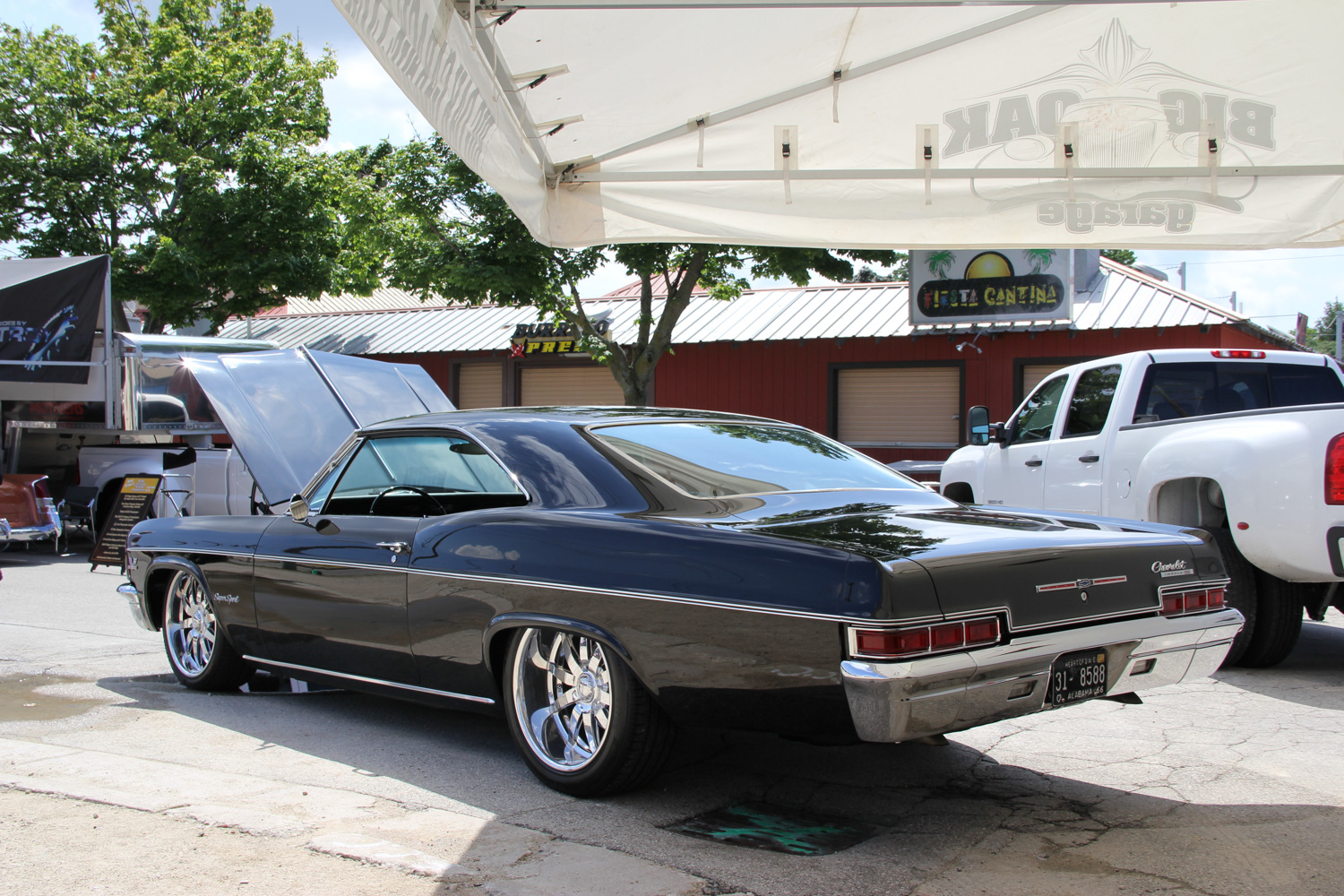
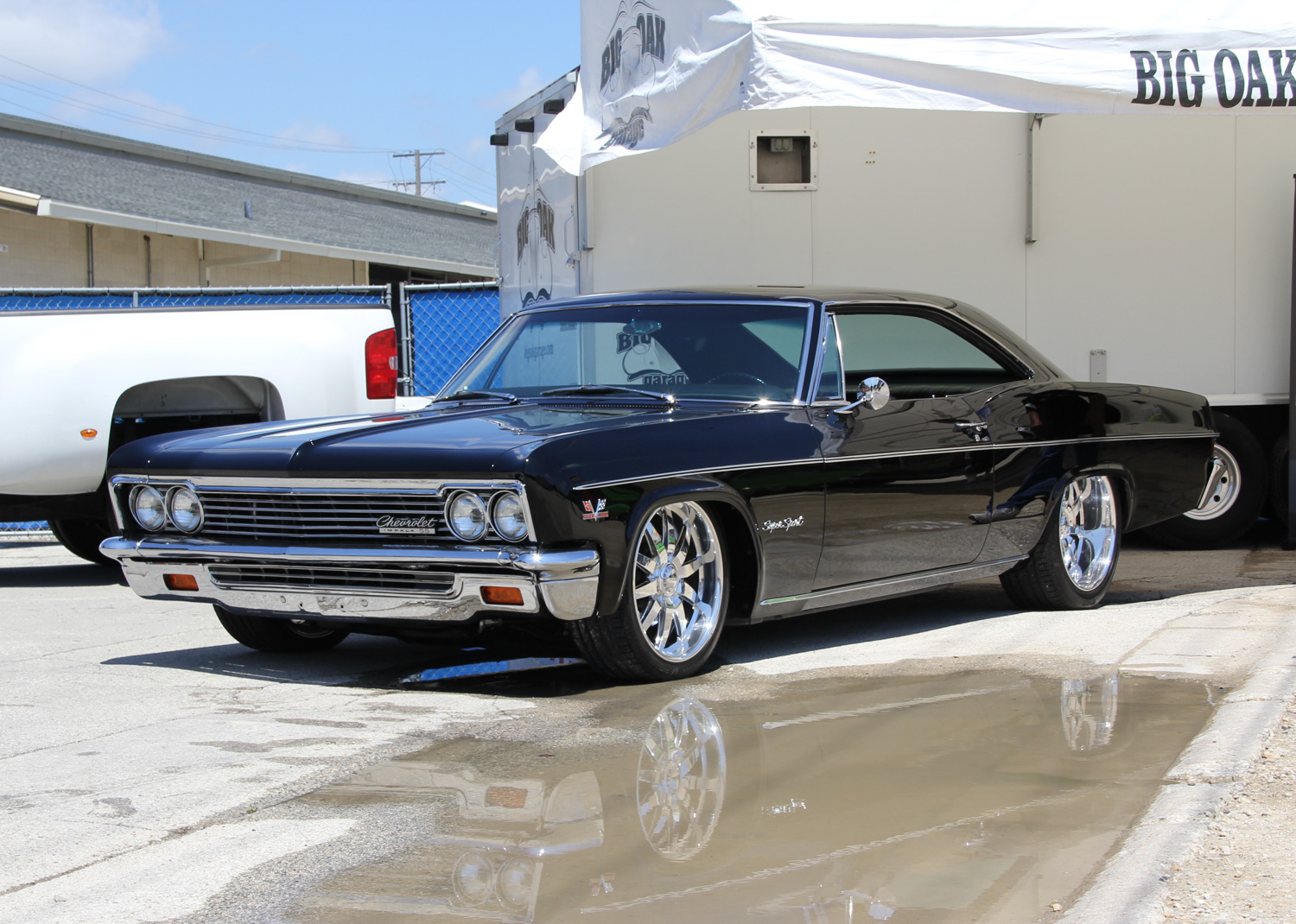
The Super Sport performance package continued to be a popular option, available with a wide range of powertrain options. Still more options included four-way power bucket seats, a vinyl roof, and positraction limited-slip rear ends. The Biscayne was the base model, which became drag racers’ choice for competing in full-size production classes.
Minor grille changes also arrived in ’66, and slim vertical taillights replaced what had been standard, round triple-taillights since 1958. Sedans, hardtops, convertibles, and six- or nine-passenger wagons, combined with the wild array of powertrain and package options, make 1965–66 full-size Chevys as desirable and collectible today as they were popular when new.
When you add in the face-lifted B-bodies through 1970, the 1965–70 B-body platform was the fourth-largest selling platform in the history of the automobile, trailing the Volkswagen Beetle, Ford Model T, and Lada Riva. This helps to keep the lid on current market prices. Reproduction components are abundant, from padded dashes, sheet metal, and trim, to suspension. And steering and engine swap kits adapt more modern components for a high-quality hot rod.
